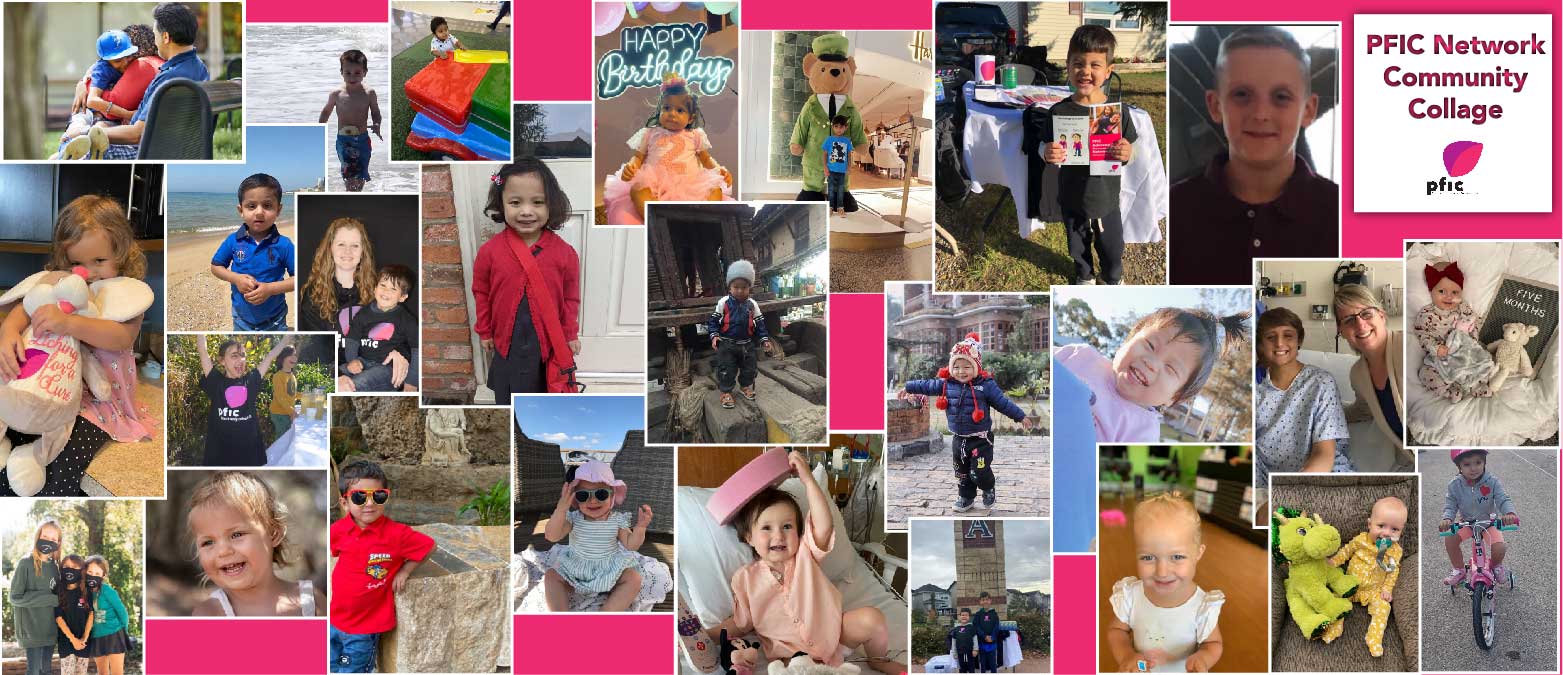Microdosing Mindfulness
Stress Reduction in 60 Seconds
If you attended or listened to the recent (and wonderful!) Rare and Resilient Webinar Series by Caitlin Schneider, then you’ve likely given some thought to the mind-body connection and the ways in which stress impacts everything from the severity of pruritus to our level of life satisfaction. In the first two installments of the series, Caitlin details what is known about the relationship between stress and itch, and she offers several tools that can be used to decrease stress for both patients and their caregivers. One of these tools is mindfulness. Before we explore this in greater depth, it’s worth pausing for a moment to consider why reducing caregiver stress is just as important as reducing stress for a PFIC patient. (If you are a PFIC patient yourself, feel free to skip the next two paragraphs!)
Imagine that you are attending a small gathering in a friend’s home. She has spent hours preparing and is determined for everything to go well. She is so determined, in fact, that she is unable to enjoy the evening herself. She flutters about, frantically refilling platters, mixing drinks, and busing dishes. She cannot relax until she is certain that everyone else is having a wonderful time—but that certainty proves elusive. Stress ripples from her body in almost visible waves, but she refuses offers of help because of her determination to make the gathering perfect and stress-free for everyone else. How relaxed and comfortable do you feel in her presence?
In the same way that a host sets the energetic tone for a gathering, parents create an energetic landscape in which their children live and learn and grow. This is especially true for young children. What this means is that the stress of caregivers has a direct impact on the stress of children in their care. This truth is not a stick with which to beat your past (or present), imperfect self. It’s an opening through which you can step, inching forward a little at a time, bit by bit making life better for yourself and for the PFIC patient that you love.
With all of that in mind, let’s talk about one of the most powerful stress-reduction tools: mindfulness. Mindfulness is a state of heightened awareness or presence, coupled with openness and non-judgment. It doesn’t require any special tools or training. In fact, young children are experts at it!

Think of the fully focused delight with which a toddler shovels sand or draws a picture or blows the seeds of a dandelion. This child has not yet learned to worry about whether their sand creation will be destroyed by the wind, whether their artwork is as good as someone else’s, or whether the neighbors want a fresh crop of dandelions springing up in their yard. That sort of learning accrues with time. In a sense, then, to practice mindfulness as an adult is to temporarily unlearn. It’s to experience the world through the eyes of a young child. It’s to feel the sand as if for the first time, to glide a crayon across the paper with a sense of wonder about what might emerge, or to feel the wind against your skin as if you are a dandelion seed and might at any moment be lifted away.
If you have vast swaths of uninterrupted time to dedicate to mindfulness, you are very lucky indeed. This isn’t necessary to reap it’s benefits, though. A recent study done at UC Berkeley explored the benefits of “microdosing” mindfulness. Researchers wanted to know whether the practice of seeking awe through ordinary experiences brings the same stress-reducing, happiness-enhancing benefits associated with more time-consuming mindfulness practices. The answer is: yes! So let’s talk about what discovering awe in the ordinary looks like. The researchers use A.W.E. as an acronym to describe the steps involved.
A is for Attention
Mindfulness is often described as completely open attention. In this study, where the goal was to foster a sense of awe or wonder, participants were encouraged to pay attention specifically to things they appreciate, value, or find amazing. To practice this step, carve out one minute of time to pay attention to something you like or find amazing. It could be the sensation of the shower water on your skin. It could be the sound of a loved one’s voice, the taste of your food, the texture of a houseplant, the colors of a sunset, or the feeling of the ground beneath your feet. For a brief moment, give your mind and heart fully to the sensations of whatever you are experiencing.
W is for Wait
When your attention focuses, your mind will naturally get quieter. Give this experience a little bit of time—the length of one full breath, perhaps. For the length of that breath, simply notice the quiet or the calm or whatever comes up.
E is for Exhale and Expand
Take a long exhalation—approximately twice as long as your inhalation. Doing so triggers your vagus nerve and calms the nervous system, turning down your body’s stress response. As you exhale, allow whatever you are sensing and feeling to expand within you.
You might wonder how these steps interact and whether all three are actually necessary for reducing stress. A long exhalation all on its own is often enough to bring stress down a notch. Similarly, taking a minute to focus your attention on some aspect of your surroundings may suffice to inject some calm into your day. A certain magic happens when these steps come together, though, with a brief pause (the “wait” step) between them.

The contrast between the quiet created by Attention and Waiting and the expansion generated with a deep Exhalation is what awakens awe. Attention and Waiting quiet the mind, and then Exhalation triggers the brain to release dopamine, which enhances your mood. As the study’s authors describe it, “First, you create a quiet inner space—imagine the pitch-black night sky on the Fourth of July, before the fireworks. Then fireworks light up the sky. The contrast dramatizes the experience. If the same fireworks took place at noon, the effects would be diminished. So, you quiet your mind with focused attention, you wait, and then you experience your own inner light show.”
If you are a caregiver to a PFIC patient, it may seem hard to grant yourself an “inner light show” while the child beside you is suffering. This is such a natural feeling and source of hesitation. You are not alone in it. Please remember that, in addition to the very real truth that you deserve and are worthy of moments of happiness, your suffering and stress cannot generate happiness for anyone else. Stress generates more of the same, creating a spiral that someone must interrupt. That someone can be you. Choosing to nourish one or two or three or ten minutes a day of peace, calm, awe, or joy is enough to transform a day. You don’t need an hour of free time to get started. You can microdose mindfulness, beginning with this moment right now.
Take a look around the room and let something that you like catch your attention—the view from a window, perhaps, or a painting or houseplant or blanket or pet. Allow yourself for just one minute to fully experience this thing. Pause in this quiet space of noticing. Breathe in. Then take a long breath out.
Each time that you do this, you are reducing stress and increasing well-being for yourself and—as a result—for the loved ones around you.
This is not a magic potion that will permanently eradicate stress from your life or from the lives of the people you care for. Living with PFIC, either in your own body or in the body of someone you love, is just plain stressful and hard. But by practicing mindfulness–even in small doses–you can interrupt the seemingly constant train of stress or worry. You can bring bits of magic into each day. At first, this may feel like too much to reach for on your toughest days, but mindfulness muscles grow with practice. Keep at it, being gentle with yourself as you practice. Over time, you may find yourself able to access presence, calm, stillness, or awe even on the darkest days.
